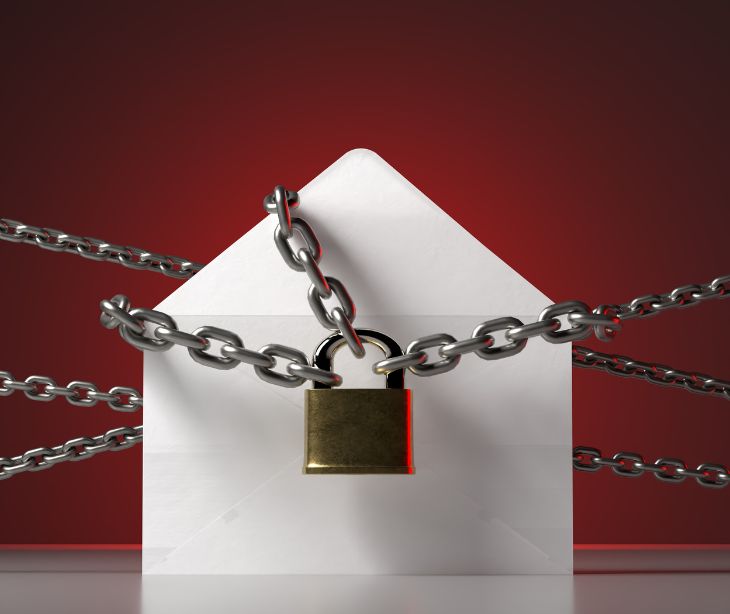
Email security is a critical concern for organizations and they need measures to protect their email systems. DMARC, which stands for Domain-based Message Authentication, Reporting, and Conformance is a technical standard that helps safeguard email senders and recipients from advanced threats that can lead to data breaches.
Understanding DMARC
DMARC is designed to address the vulnerabilities associated with email authentication. It enables domain owners to outline their authentication practices and specify the actions to be taken when an email fails authentication. DMARC adds an extra layer of protection to business email systems. It helps combat attacks like impersonation fraud, where attackers use a legitimate domain to send fraudulent messages. With DMARC, both senders and recipients can have greater confidence in the authenticity and integrity of their email communications.
Read more: What is an impersonation attack?
Defending against spoofing with DMARC
One of the primary threats that DMARC helps mitigate is domain spoofing. Cybercriminals often send fraudulent emails from legitimate domains to trick users into divulging sensitive information or making financial transactions. DMARC email security protocols play a significant role in preventing this type of attack. They allow senders to notify recipients that their messages are protected by SPF (Sender Policy Framework) and/or DKIM (DomainKeys Identified Mail) authentication.
Additionally, DMARC provides instructions on handling emails that fail these authentication methods, minimizing the recipient's exposure to potentially fraudulent emails and protecting the sender's domain from exploitation.
Read also: Domain spoofing: How it works and what you can do to avoid it
Understanding DMARC policies
DMARC policies determine how receiving mail servers process emails that they receive. There are three main policies available:
None (monitoring only)
This policy instructs email-receiving systems to send DMARC reports to the designated address without affecting email deliverability. It allows organizations to gain insights into their email channel and identify potential issues with authentication.
Quarantine
This policy instructs email-receiving systems to deliver non-compliant emails to the spam folder. It provides an intermediate level of protection by mitigating the impact of spoofing and reducing the chances of users interacting with potentially malicious emails.
Reject
The reject policy is the most stringent option. It instructs email-receiving systems to reject all non-compliant messages outright. Only emails that pass DMARC authentication will be delivered to the recipient's inbox. This policy significantly reduces the risk of spoofing and ensures that only legitimate messages reach the intended recipients.
Benefits of DMARC email security
Implementing DMARC email security offers several advantages for organizations:
Prevention of phishing and spoofing attacks
DMARC helps protect against phishing attempts and specific spoofing attacks by verifying the authenticity of email senders and providing clear instructions on handling non-compliant messages.
Greater visibility
With DMARC, organizations gain insight into all outbound emails sent from their domain or through third-party providers. This visibility allows for better troubleshooting of delivery issues and provides an overview of email authentication with SPF and DKIM.
Enhanced troubleshooting
DMARC reports provide valuable information about who is sending emails on behalf of a domain. This data can help organizations identify potential issues and ensure the smooth functioning of their email infrastructure.
Google's new requirements
In February 2024, Gmail is set to implement stringent email handling policies, especially targeting senders dispatching over 5,000 daily emails to Gmail accounts. The update mandates the use of SPF, DKIM, and DMARC authentication, valid DNS records, a spam rate below 0.3%, compliance with the Internet Message Format standard, and a prohibition on using Gmail addresses in 'From' headers.
These measures aim to bolster email authentication, enhance user security, and reduce malicious activities like impersonation and phishing. Google recommends senders align with these requirements, emphasizing them as basic email hygiene, and provides clear guidance before enforcement begins.
Read more: Google announces new email guidelines for 2024
Read also: What is a phishing attack?
In the news
In February 2024, Gmail implemented stringent email handling policies, especially targeting senders dispatching over 5,000 daily emails to Gmail accounts. The update mandates the use of SPF, DKIM, and DMARC authentication, valid DNS records, a spam rate below 0.3%, compliance with the Internet Message Format standard, and a prohibition on using Gmail addresses in 'From' headers.
These measures try to bolster email authentication, enhance user security, and reduce malicious activities like impersonation and phishing. Google recommends senders align with these requirements, stressing them as basic email hygiene, and providing clear guidance before enforcement begins.
Read more: Google announces new email guidelines for 2024
How Paubox can help
DKIM is a good first step in email authentication, and it can be done using Paubox Email Suite Plus. One of the hundreds of checks Paubox Email Suite Plus makes against incoming emails includes validating DKIM, SPF, and DMARC records. However, some spammers can still get around the signature test by using valid consumer platforms like Yahoo! and Gmail, so your inbox needs further protection, such as the advanced threat detection features Paubox Email Suite Plus offers.
FAQs
What is DMARC and how does it relate to healthcare security?
DMARC (Domain-based Message Authentication, Reporting, and Conformance) is an email authentication protocol that helps prevent email spoofing and phishing by verifying the sender's identity. In healthcare, DMARC is necessary for protecting against malicious emails that could compromise sensitive information, including electronic protected health information (ePHI). Implementing DMARC supports HIPAA compliance by securing email communications, reducing the risk of phishing attacks, and protecting patient data.
What are the potential risks associated with not using DMARC in healthcare under HIPAA?
- Phishing attacks: Without DMARC, attackers can spoof legitimate email addresses to trick healthcare staff into revealing credentials or sensitive information, compromising ePHI.
- Data breaches: Unauthenticated emails may lead to unauthorized access or exposure of patient information, violating HIPAA’s privacy rules.
- Non-compliance penalties: Failing to secure email communications can result in significant legal and financial penalties for HIPAA violations.
- Reputational damage: Healthcare organizations that fall victim to email-based attacks may lose the trust of patients, partners, and the public.
- Operational disruptions: Phishing and spoofing attacks can disrupt workflows and lead to security incidents that impact healthcare services and operations.
How can healthcare facilities implement DMARC to enhance email security and maintain HIPAA compliance?
- Setting up DMARC policies: Configuring DMARC policies with aligned SPF (Sender Policy Framework) and DKIM (DomainKeys Identified Mail) records to verify that emails come from legitimate sources.
- Enforcing DMARC alignment: Ensuring that both SPF and DKIM records align with DMARC policies to prevent email spoofing and improve authentication.
- Monitoring DMARC reports: Regularly reviewing DMARC reports to identify any unauthorized use of the domain and detect potential phishing or spoofing attempts.
- Gradually implementing stricter policies: Starting with "monitor" mode to gather data, then moving to "quarantine" and "reject" modes to prevent spoofed emails from reaching inboxes.
- Educating staff: Training employees on how to recognize legitimate emails and respond to potential phishing attempts, complementing DMARC’s technical protections.
What role does DMARC reporting play in managing email security for healthcare organizations?
DMARC reporting provides valuable insights into email activity by showing which emails pass or fail authentication checks. Regularly reviewing DMARC reports enables healthcare organizations to detect unauthorized attempts to use their domain, understand potential vulnerabilities, and take corrective actions. DMARC reporting helps maintain HIPAA compliance by ensuring that email communications are secure, authenticated, and free from phishing or spoofing risks.
Subscribe to Paubox Weekly
Every Friday we'll bring you the most important news from Paubox. Our aim is to make you smarter, faster.




